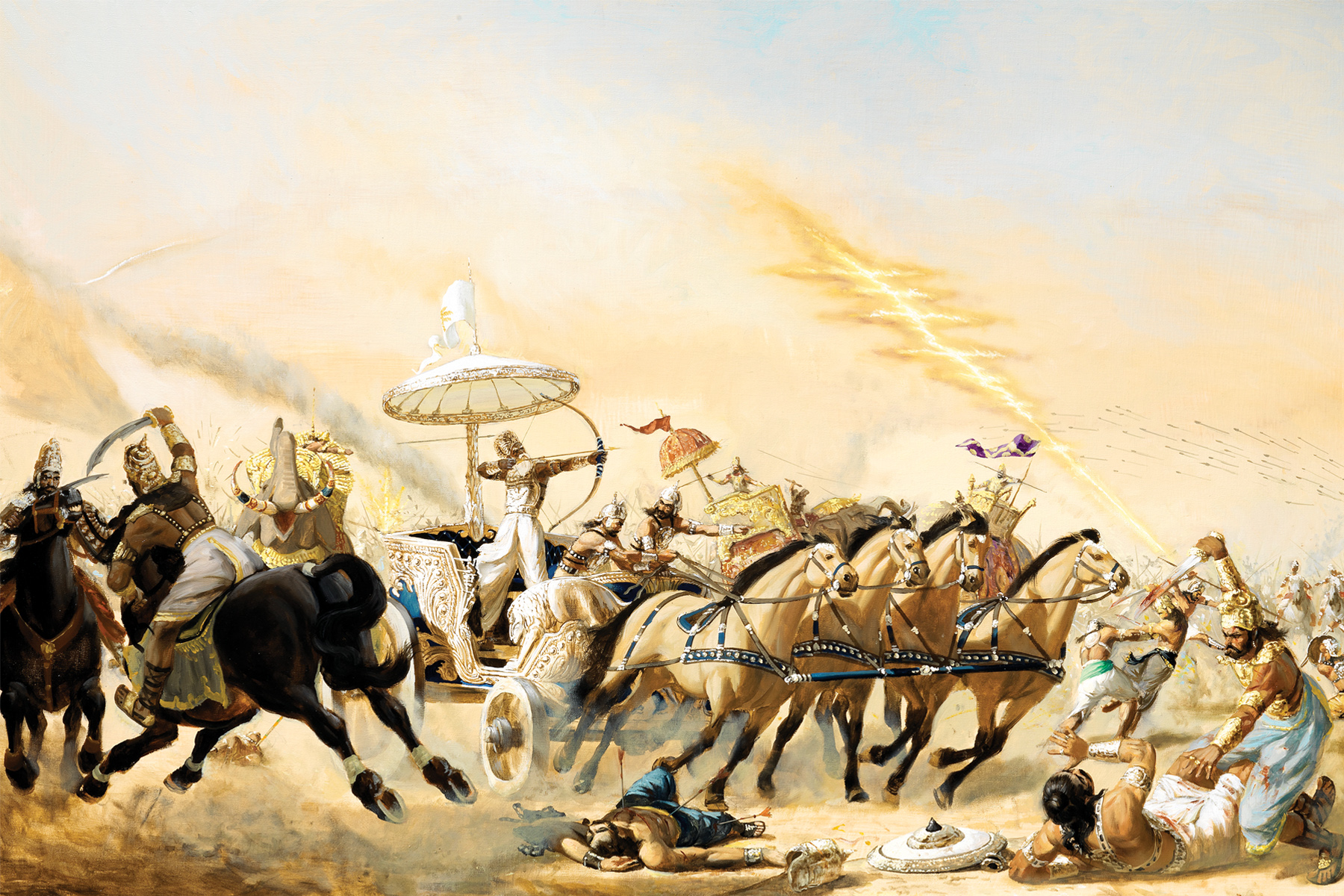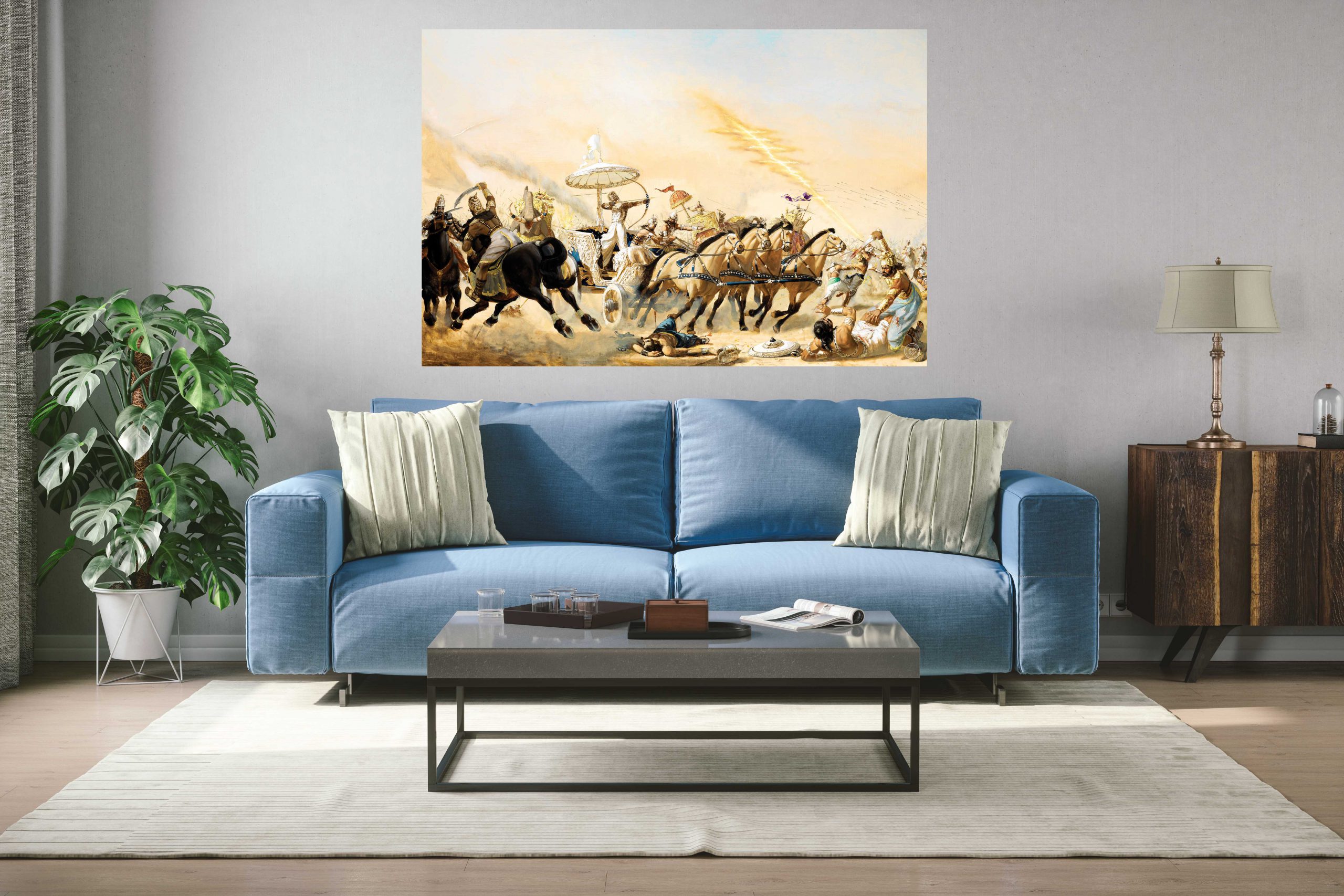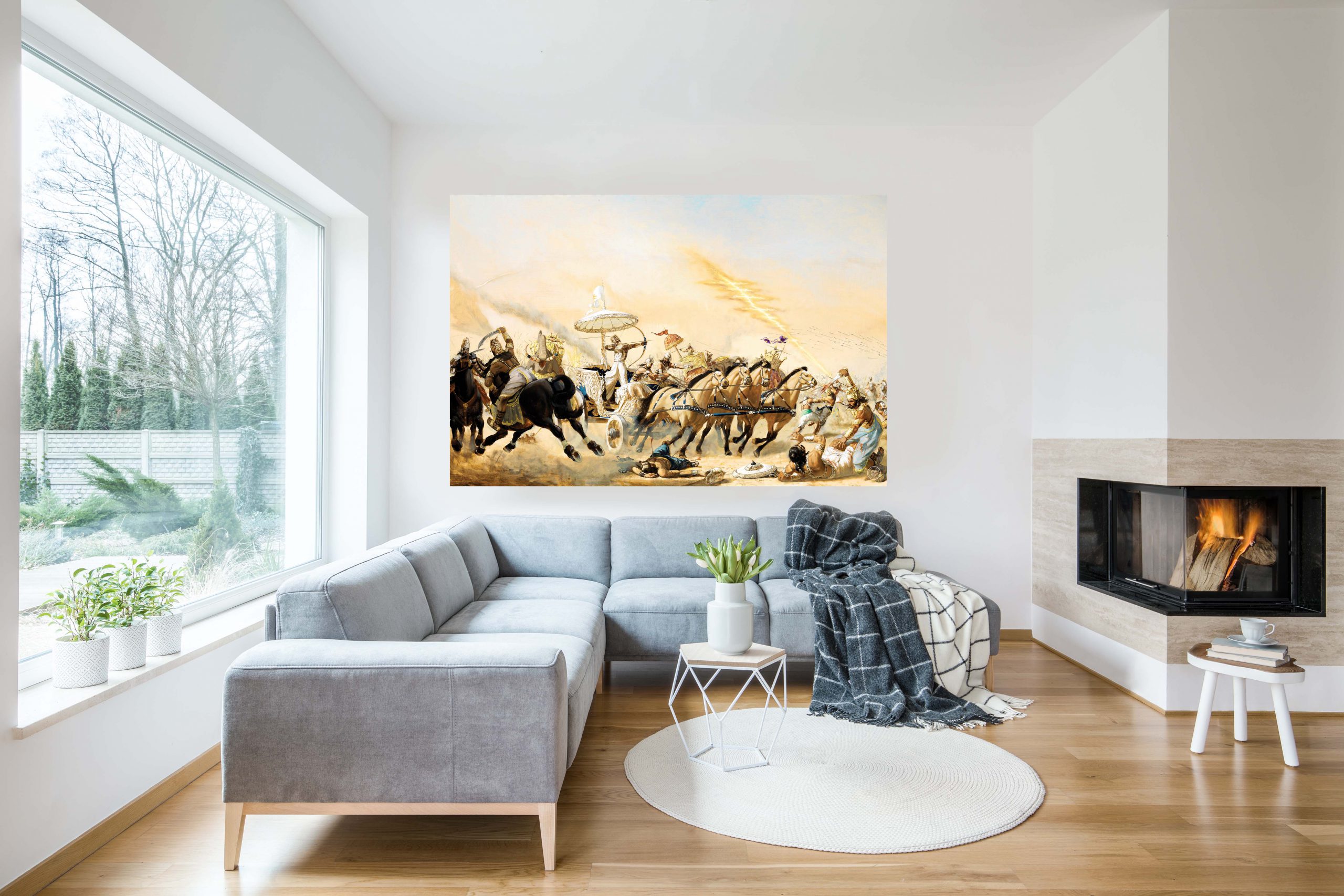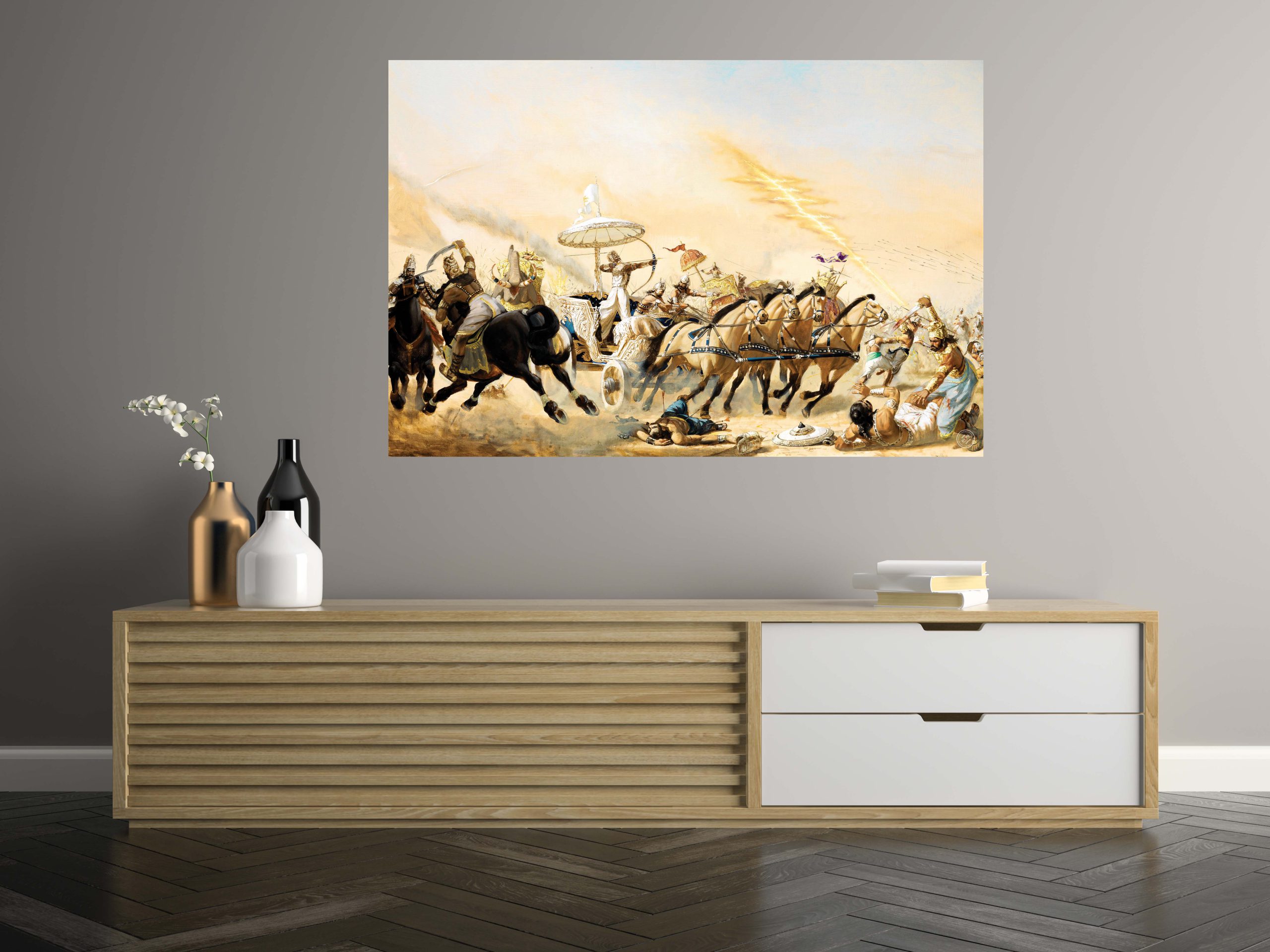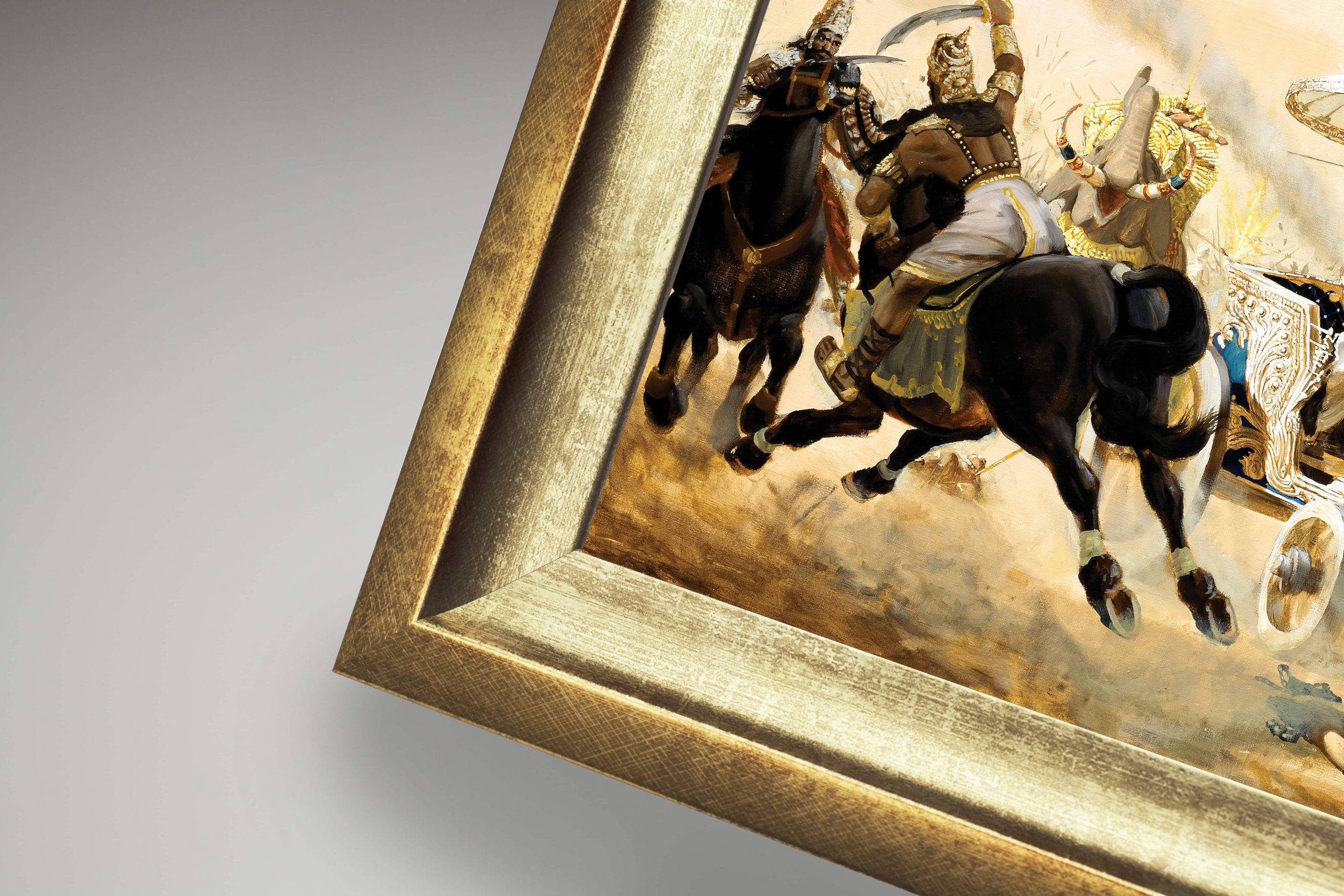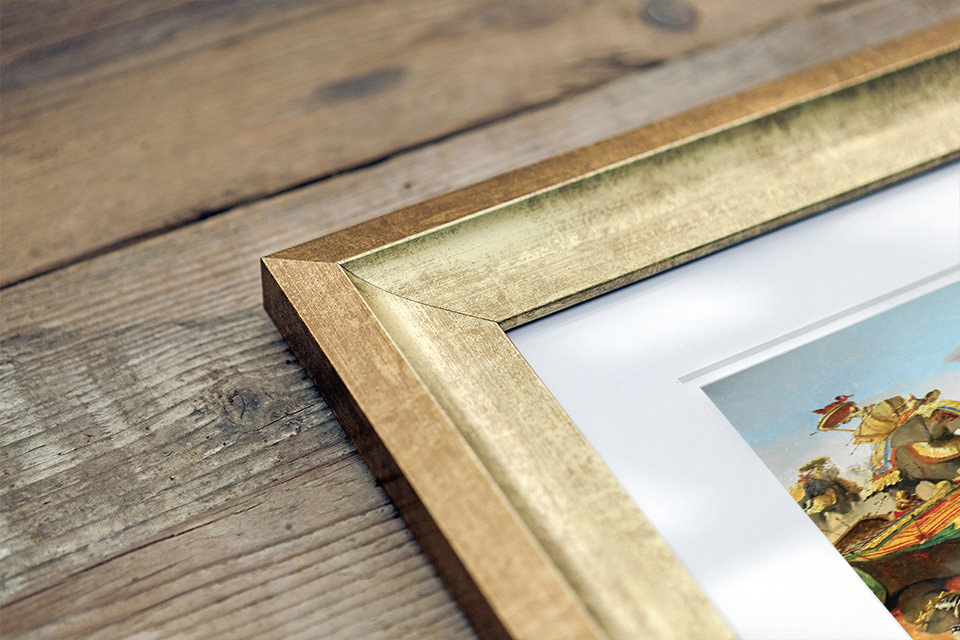Mahabharata – The Rush of the Hero
Bhismadeva, also called Pitamaha – the patriarch, is an oxymoron between old age and his surprising agility and superhuman strength. Fate and code of honour had decided that he was to stand against the Pandavas. Even as he was fighting them in his heart he was on their side.
£ 165.00 – £ 755.00
More like this
-
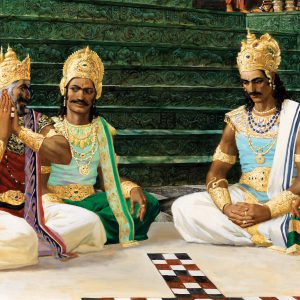
Mahabharata – The Pandavas were cheated
£ 155.00 – £ 770.00 BUYAt the bottom of the steps to the throne, in the middle of the royal room, a tremendous contest happened: it decided the destiny of the Pandava brothers and triggered the tragic event of the Kurukshetra war. The Pandavas are defrauded of royal rights and all belongings by their closest relatives with a rigged game of dice.
Regal dresses hide evil and dishonest personalities. The artist showed mischievous and sinister expressions on the faces of the devious uncle, Shakuni – an expert in the game of dice, and Duryodhana. He wanted to show, expressively, the two very opposing moods of the moment. Arjuna’s resignation, as he knows they are about to lose the contest, and King Yudhishthira’s display of anxiety, for the last throw in the game, where he knows he will lose everything.
-
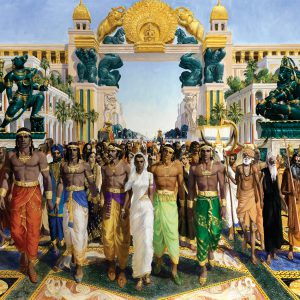
Mahabharata – Pandavas enter Hastinapura
£ 165.00 – £ 660.00 BUYIn this artwork. the Pandava brothers come to Hastinapur after the death of their father, much to the chagrin of Duryodhana. Out of the curiosity and love, all the citizens gather. When the five brothers, enter the city triumphantly with their mother Kunti Devi, accompanied by rishis and great sages.
The composition of this painting shows the frontal view of the crowds that have gathered to greet them and symbolises the entrance of the noble characters into the epic tale, emphasising their presence into the city as well as into the plot of the Mahabharata.
-
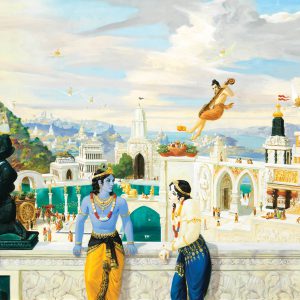
Mahabharata – My Dwarka
£ 155.00 – £ 795.00 BUYCities are a reflection of the ones who built them. The prosperous city of Dwarka, which was capital of Lord Krishna’s kingdom, was a gateway to heaven. Located in modern day Gujarat, the city of Dwarka is often compared to the city of Atlantis, maybe because they both suffered the same fate of being plunged into the depths of the sea.
This painting represents a moment in the daily life of Dwarka. It was described as a vast area in which architecture, palaces and houses are fully merged in the natural landscape of the west coast of India. You can see Krishna and Balarama in a relaxed conversation, framed by marble and bronze. The sky is painted with lightful strokes creating a wide space for legendary figures and flying creatures that break through a banal perception.

